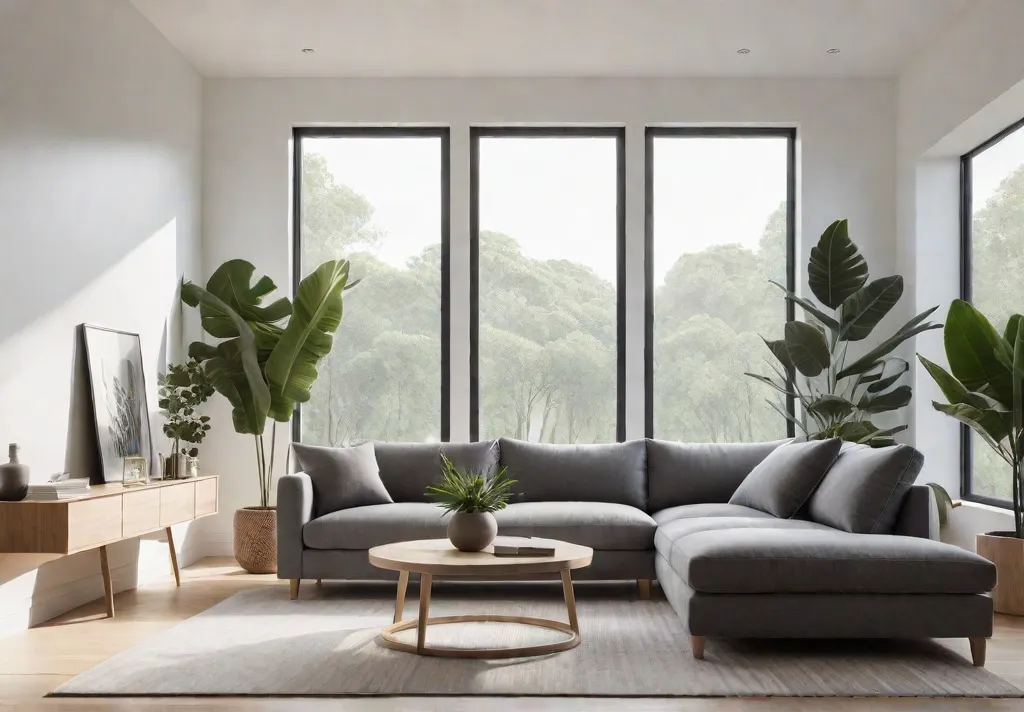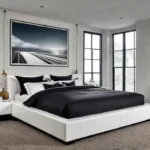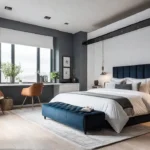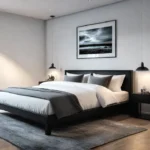Imagine stepping into a space that instantly melts away the stresses of the day – a sanctuary of tranquility where every element works in harmonious simplicity. Welcome to the minimalist living room design world, where less truly is more. As a free-spirited wanderer with an eye for understated elegance, I’m here to guide you in curating your oasis of calm.
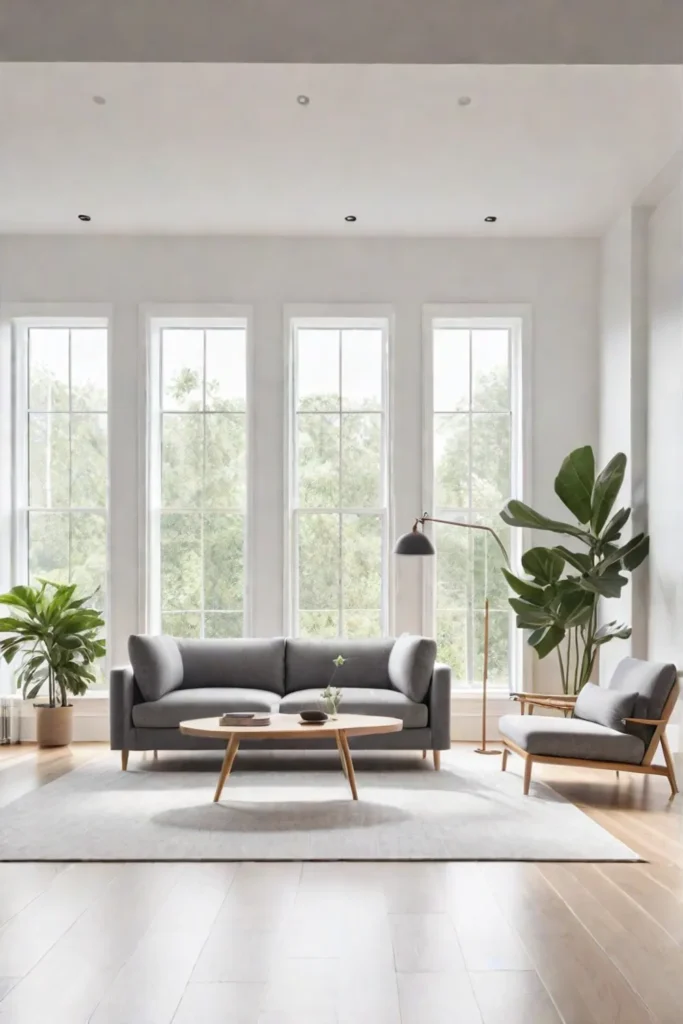
From the artful blend of natural textures and handcrafted accents to the thoughtful play of light and strategic pops of color, each aspect has been carefully composed to evoke a sense of serenity. But minimalism isn’t just about aesthetics – it’s a lifestyle that declutters the mind and the space around you. So, let’s embark on this transformative path together, where you’ll discover the profound beauty in simplicity and the art of living with intentional presence.
Decluttering for a Clean Slate
Are you one of those people who can’t seem to part with anything? Well, let me tell you, decluttering is the foundation of minimalist design, and it’s essential for achieving that serene living room you’ve been dreaming of.
The KonMari Method: Does it Spark Joy?
You’ve probably heard of Marie Kondo’s famous decluttering method, which involves holding each item and asking yourself, “Does this spark joy?” It’s a simple yet profound way to evaluate your belongings and keep only what truly matters to you. Trust me, once you start decluttering using this method, you’ll be amazed at how much unnecessary stuff you’ve been holding onto.
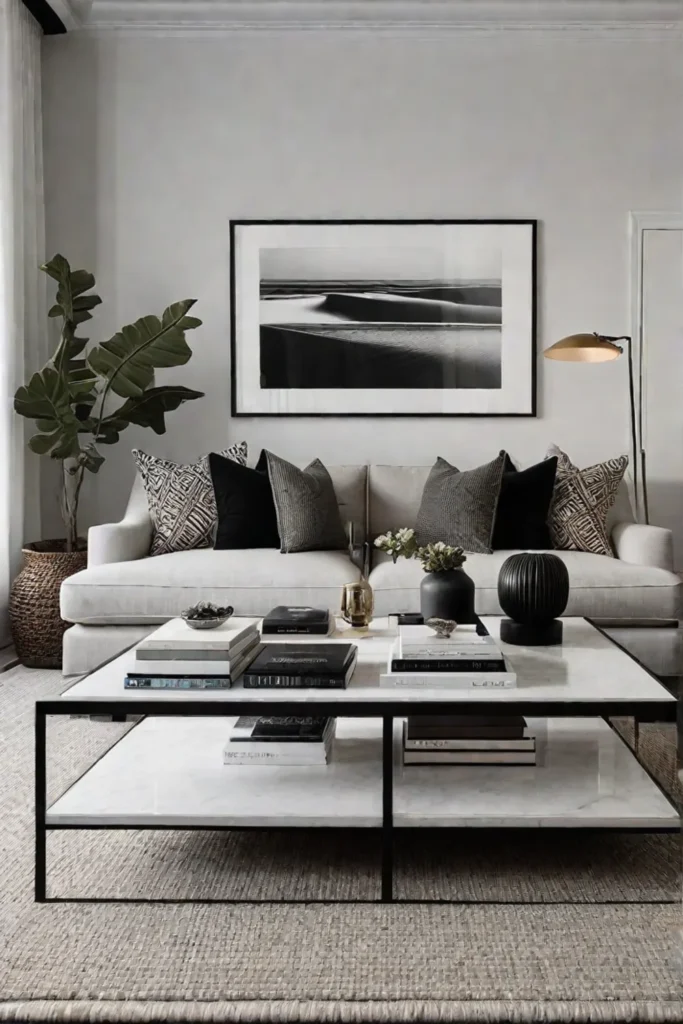
Effective Decluttering Strategies
But decluttering isn’t a one-size-fits-all process. It’s important to find a strategy that works for your personality type. For example, if you’re a visual person, try the “pile method” – gather all your belongings in one room and sort them into piles based on whether you want to keep, donate, or discard them. If you’re more analytical, make a spreadsheet and categorize your items based on their function or frequency of use.
One Step at a Time
Decluttering is an ongoing process, so don’t try to tackle your entire home in one go. Start with one area at a time, like a bookshelf or a closet. This way, you won’t feel overwhelmed and can celebrate small victories along the way. And don’t forget to donate or sell the items you no longer need – not only will it free up space, but it’ll also bring a sense of satisfaction knowing that your belongings are finding new homes.
Clutter can profoundly impact our mental well-being, contributing to feelings of stress and anxiety. By decluttering and creating a sense of spaciousness, you’ll be amazed at how much lighter and more focused you’ll feel. And who knows, you might even rediscover some long-forgotten treasures in the process!
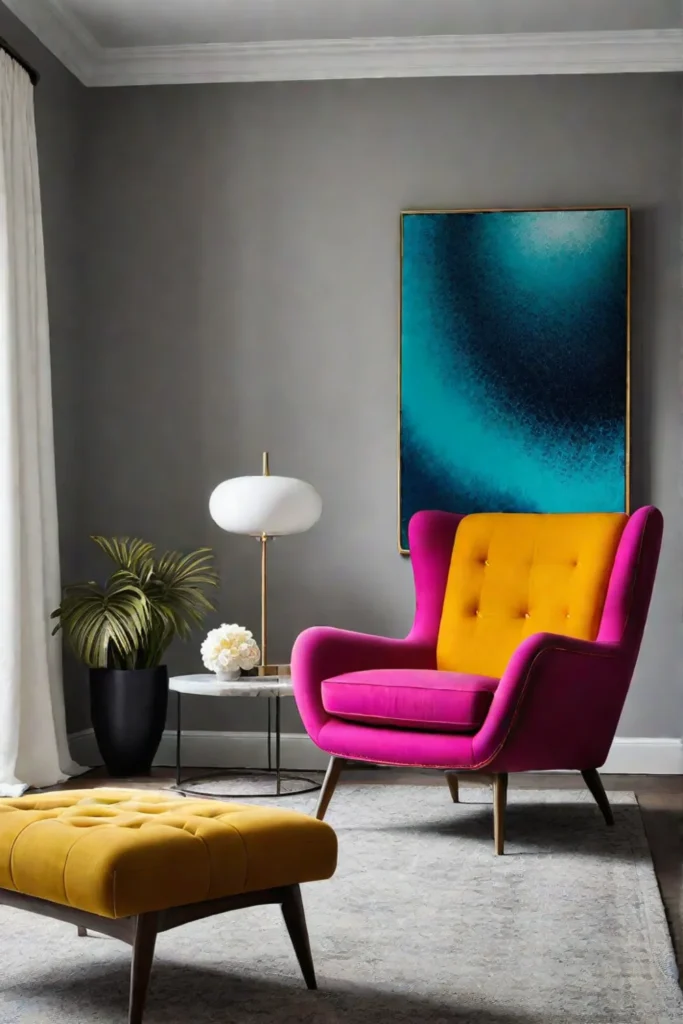
Did you know that the average American home contains a staggering 300,000 items? It’s time to break free from the clutter and embrace the minimalist lifestyle. Trust me, your living room (and mind) will thank you for it.
Decluttering is the first step, but there’s more to minimalist design than just getting rid of stuff. Are you ready to explore the power of neutral colors? Buckle up because we’ll dive into a world of elegance and timeless appeal.
The Power of Neutral Colors
Have you ever stepped into a room and felt an immediate calm wash over you? That’s the magic of neutral colors! As a home decor enthusiast and expert copywriter, I can attest to the power of these versatile shades in creating a serene and minimalist living space.
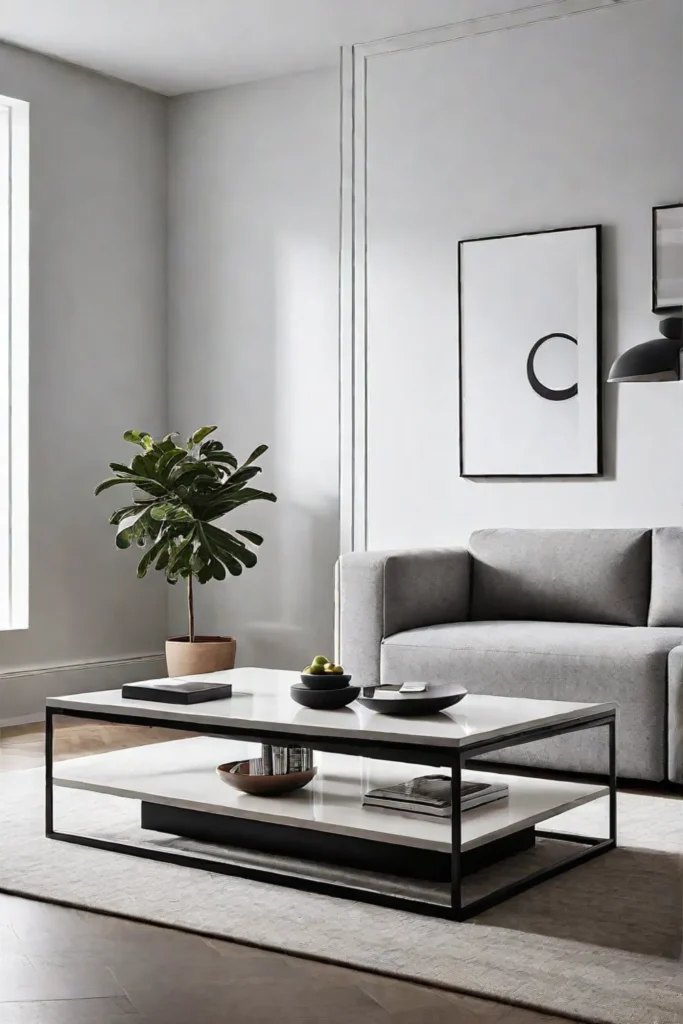
Exploring the Neutral Palette: Beyond White and Beige
When we think of neutral colors, white and beige often come first. But did you know that the neutral family extends far beyond these classic hues? Soft grays, warm tans, and even muted greens can all contribute to a calming and sophisticated atmosphere. The key is to choose shades that evoke a sense of understated elegance and tranquility.
Using Accent Colors Strategically
While neutral colors provide the perfect backdrop for minimalist design, a splash of color can add depth and personality to your living room. The trick is strategically using accent colors, ensuring they complement the neutral palette rather than overwhelming it. A vibrant throw pillow or a statement piece of artwork can instantly elevate the space without sacrificing its serene vibe.
One interesting fact about neutral colors is that they can evoke different moods and perceptions. For example, cooler shades like gray can create a sense of sophistication, while warmer tones like beige or tan add warmth and coziness. Playing with textures and patterns allows you to add visual interest without compromising the minimalist aesthetic.
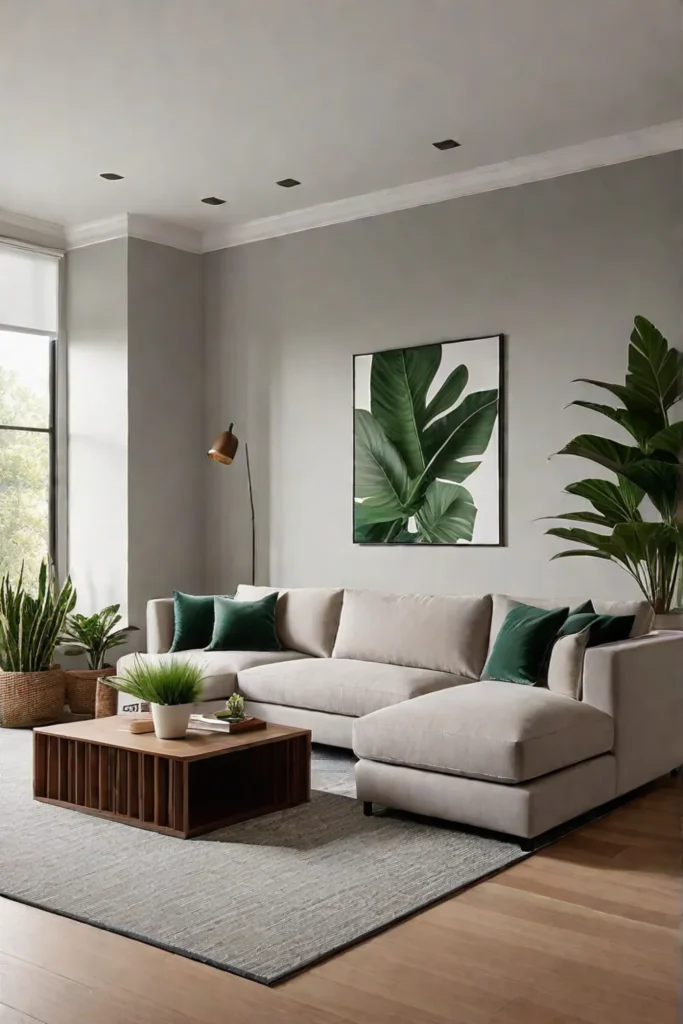
If you’re wondering how to incorporate accent colors into your minimalist living room, my top tip is to choose hues that complement the neutral palette. A deep blue or emerald green pop can add depth and richness, while a soft blush or mustard yellow can infuse warmth and energy. Ultimately, the key is to strike a balance and let the neutral tones be the show’s star.
In summary, neutral colors are the foundation of a minimalist color scheme, providing a calming and versatile backdrop for your living room design. You can create a space that exudes serenity and personality by strategically incorporating accent colors and playing with textures and patterns.
Regarding personality, let’s move on to the next section: Functional Furniture: Form Meets Function. Like neutral colors, minimalist furniture is about striking the perfect balance between simplicity and style.
Functional Furniture: Form Meets Function
As a minimalist interior designer, I firmly believe that every piece of furniture should look beautiful and serve a practical purpose. After all, a living room is a space where we gather, relax, and entertain guests, so functionality is key.
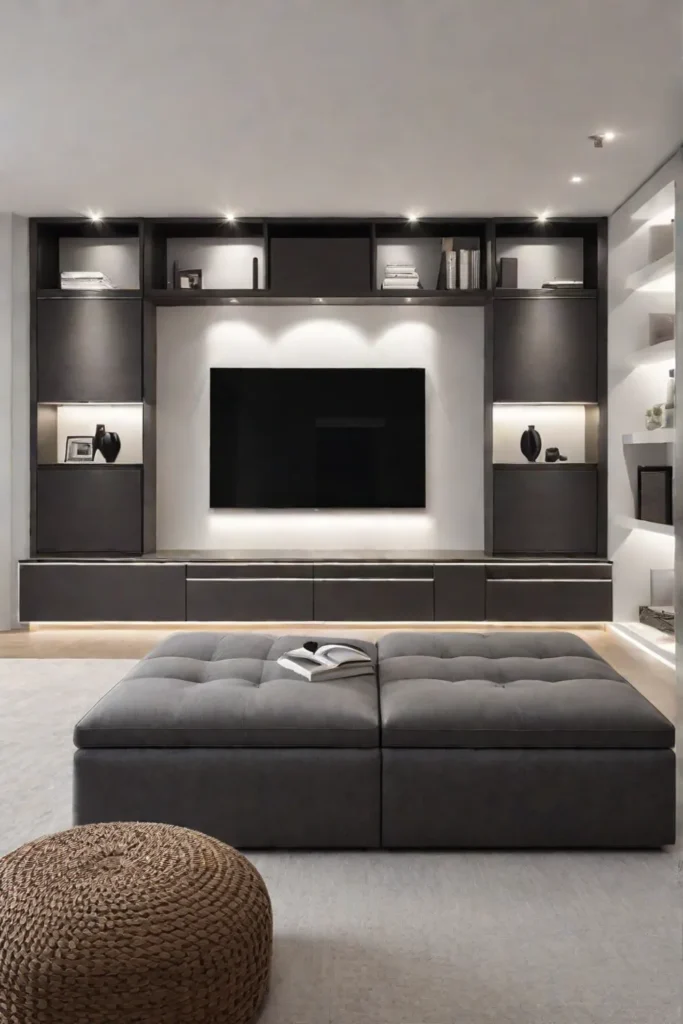
Choosing Essential Furniture Pieces
When it comes to minimalist living rooms, less is truly more. Start by identifying the essential furniture pieces you need, such as a comfortable sofa, armchairs, and a coffee table. These core pieces should have clean lines and simple designs, reflecting the principles of minimalism. Remember, each item should contribute to the overall functionality of the room.
Multi-functional Furniture for Small Spaces
Consider investing in multi-functional furniture if you’re working with a smaller living area. A sleeper sofa or a futon can double as a guest bed, while a coffee table with built-in storage can help keep clutter at bay. Modular furniture, inspired by the Bauhaus movement, offers flexibility and adaptability, allowing you to reconfigure your space as needed.

Furniture Placement and Flow
The furniture placement plays a crucial role in the flow and function of a minimalist living room. Arrange your pieces in a way that encourages conversation and movement. Avoid overcrowding the space, as this can create a cluttered and chaotic atmosphere. Instead, leave enough room for comfortable circulation and allow natural light to filter through the room.
Short transition: Embracing natural light is essential in creating a serene and minimalist living space.
Embracing Natural Light
As a designer, I firmly believe natural light is the secret ingredient for creating a serene and inviting living room. After all, what could be more calming than letting the warm rays of sunlight gently filter into your space?
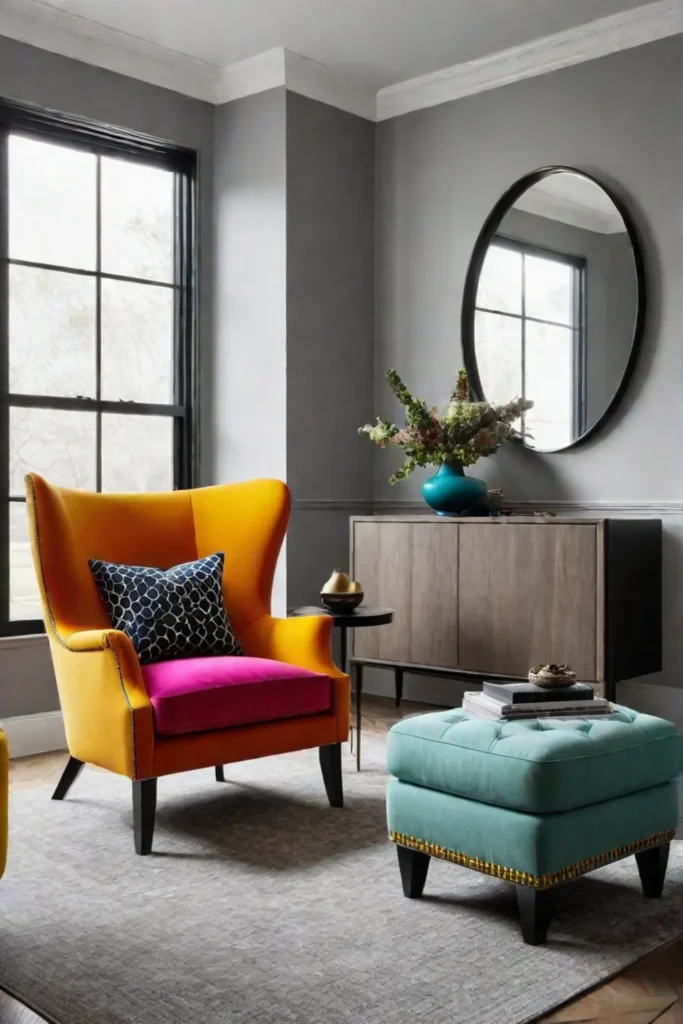
Maximizing Natural Light with Window Treatments
The key to maximizing natural light is choosing the right window treatments. Sheer curtains or blinds are a fantastic option, as they allow light to pass through while still providing some privacy. Alternatively, you could opt for floor-to-ceiling windows or even a skylight if your home’s architecture allows it. Not only will this flood your living room with natural light, but it will also create a beautiful connection with the outdoors.
Artificial Lighting Solutions for Minimalist Spaces
Of course, there will be times when natural light isn’t an option, and that’s where artificial lighting comes into play. I recommend choosing lamps with simple designs and warm light bulbs for a minimalist living room. LED lights are a great choice as they’re energy-efficient and long-lasting. You could also consider installing recessed lighting or a statement pendant light for a touch of sophistication.
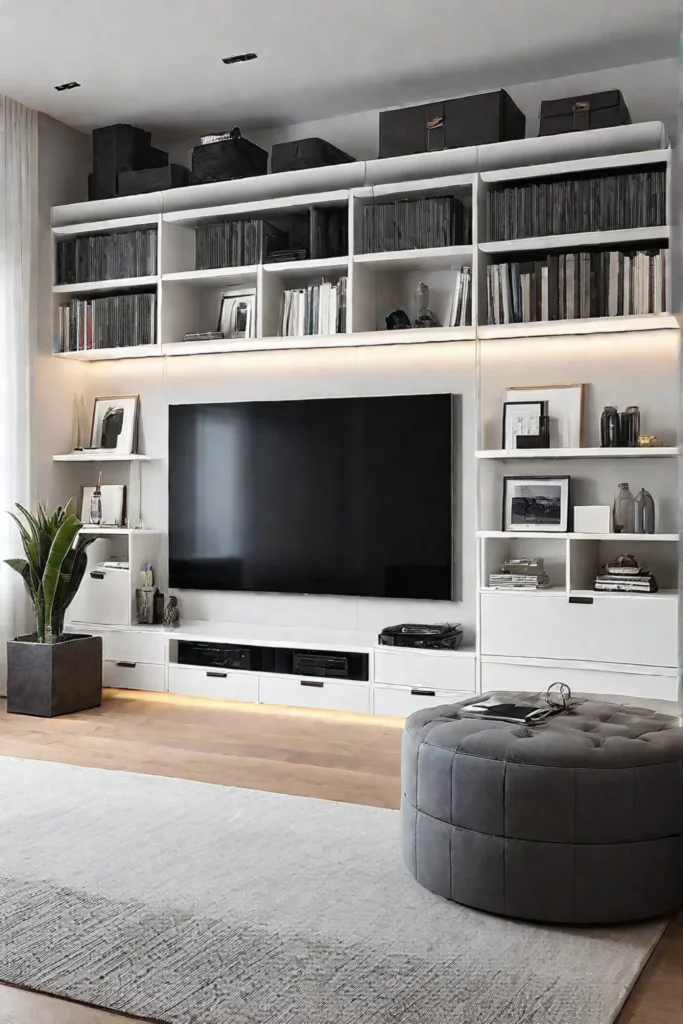
Enhancing Well-Being with Natural Light
Did you know that exposure to natural light can improve your mood and productivity? It’s true! Sunlight helps regulate our circadian rhythms, improving sleep and overall well-being. By embracing natural light in your living room, you’re not only creating a visually stunning space, but you’re also promoting a healthier lifestyle.
Natural light is a game-changer in creating a serene and minimalist living room. By thoughtfully incorporating it into your design, you’ll be well on your way to achieving that sense of simple serenity we all crave.
Creating a serene atmosphere is the next step in achieving a minimalist living room. Let’s explore some simple yet effective ways to cultivate a tranquil environment to rejuvenate you.
Creating a Serene Atmosphere
When entering a beautifully designed minimalist living room, have you ever felt an overwhelming sense of calm and tranquility? That’s the power of a serene atmosphere, carefully crafted to promote relaxation and inner peace.
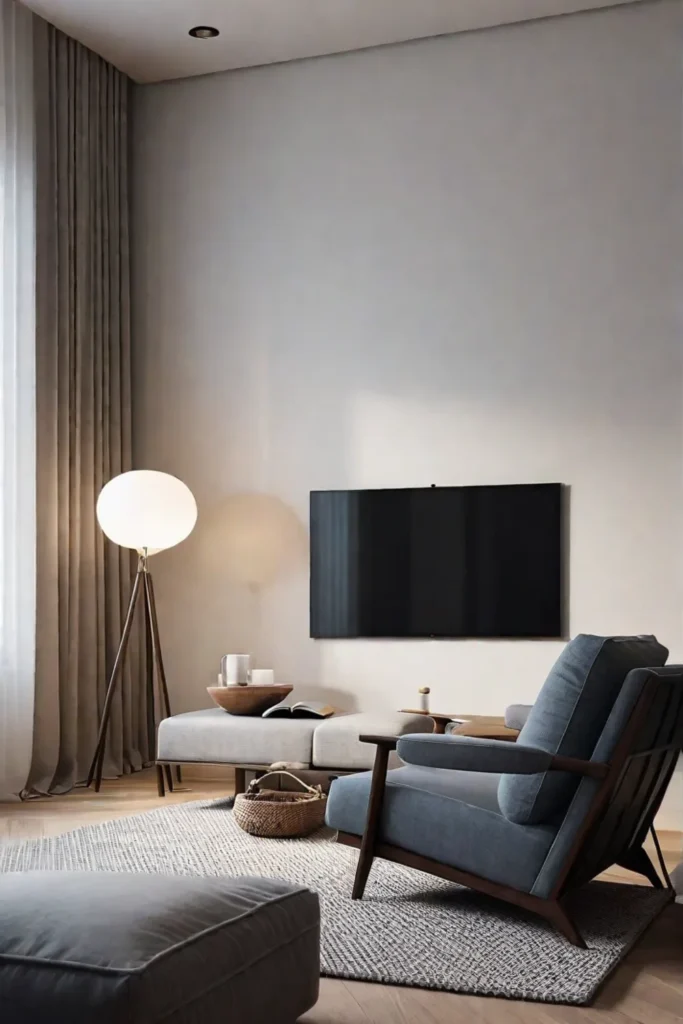
Bringing Nature Indoors: Plants and Natural Materials
One of the most effective ways to create a serene atmosphere is by incorporating natural elements into your living space. Indoor plants not only purify the air but also have a calming effect on our minds and bodies. Strategically placing a few low-maintenance houseplants, such as succulents or snake plants, can instantly add a touch of natural beauty and serenity to your minimalist living room.
In addition to plants, incorporating natural materials like wood, stone, or rattan can add warmth and texture to your space. Consider using these materials for furniture, flooring, or decorative accents. The earthy tones and organic textures will create a grounding and calming effect, enhancing the sense of serenity.
Personalizing Your Minimalist Space
While minimalism is about simplicity, it doesn’t mean sacrificing personal touches that reflect your unique style and bring joy to your living space. Carefully curated personal items, such as framed photographs, artwork, or sentimental objects, can add character and meaning to your minimalist living room without clutter.

The key is to display these items intentionally and mindfully. Choose pieces that truly resonate with you and evoke positive emotions. By surrounding yourself with meaningful objects, you’ll create a space that feels uniquely yours, enhancing your sense of comfort and serenity.
Creating a serene atmosphere in your minimalist living room is aesthetically pleasing and beneficial for your overall well-being. By incorporating natural elements and personalizing your space, you’ll cultivate an environment that invites relaxation and inner peace. What could be more serene than that?
In the next section, we’ll explore achieving a cohesive, visually appealing, minimalist living room through thoughtful color choices and intentional styling.
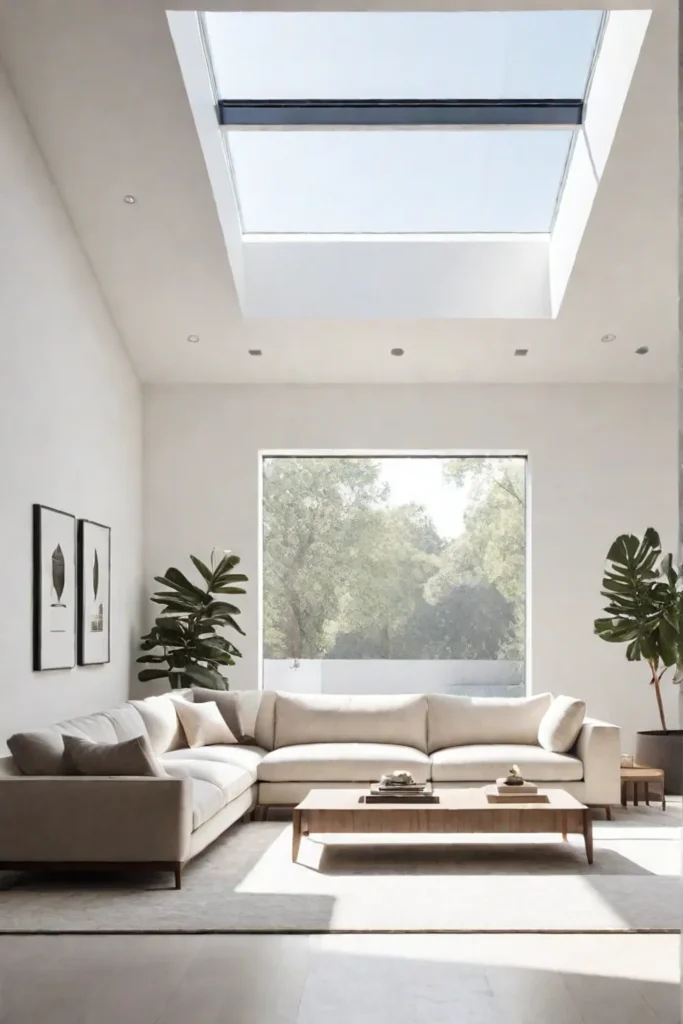
Wrapping Up Our Journey
Ultimately, a minimalist living room is more than just a stylish space – it’s a a philosophy extendingyond the physical realm. By stripping away the excess and focusing on what truly matters, you’ll live with greater clarity, presence, and inner peace.
This sanctuary you’ve created reflects your authentic self, a carefully curated tapestry woven with meaningful experiences, global inspirations, and the whispers of nature. So take a deep breath, sink into the comforting embrace of your serene oasis, and let the world outside gently fade away. This is the art of living with conscious simplicity – a way of being that will forever enrich your soul.
